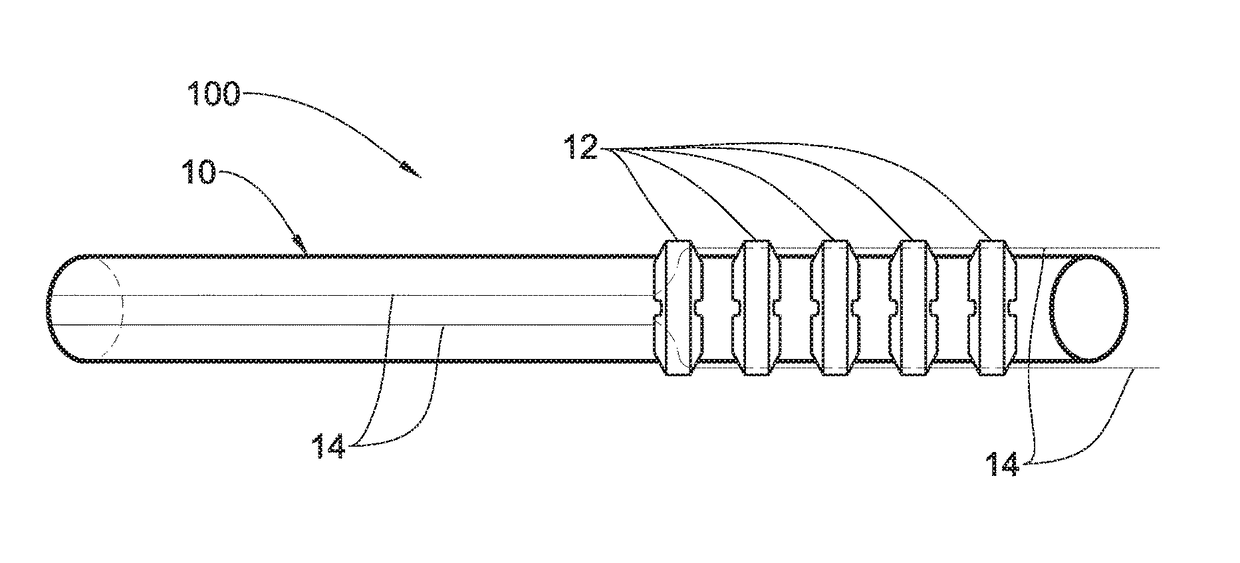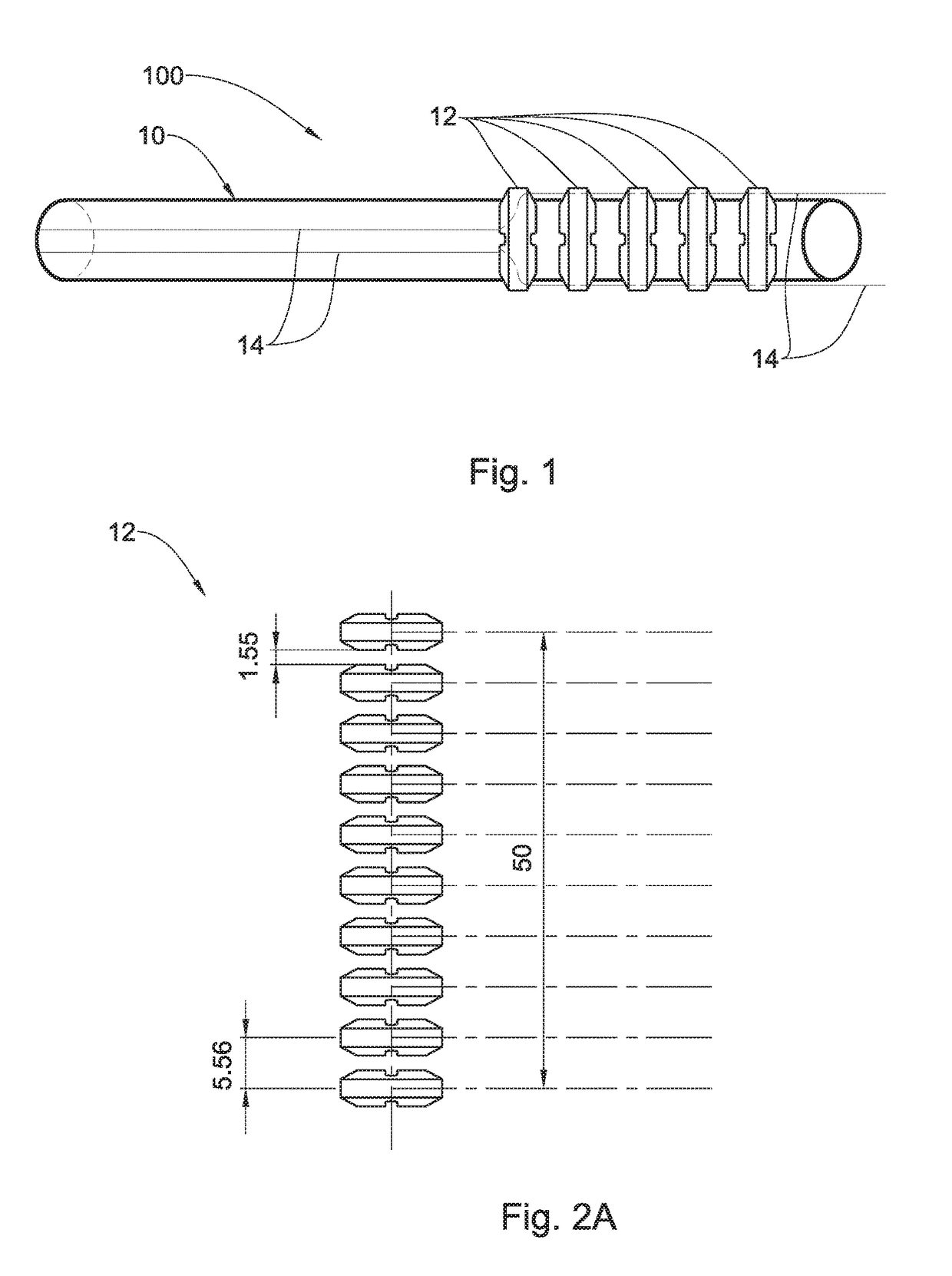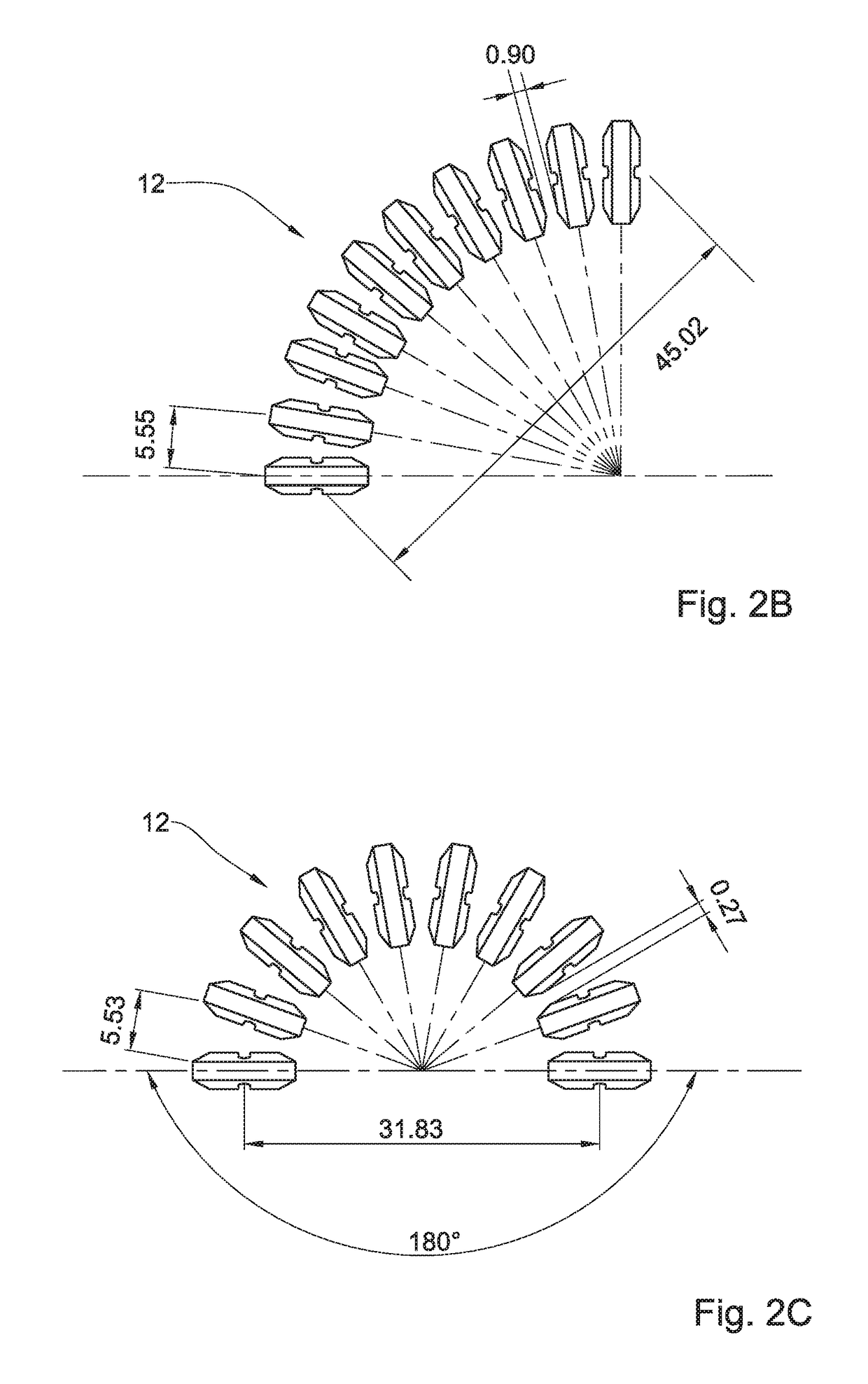Integrated steering device
a steering device and integrated technology, applied in the field of multi-directional medical instruments, can solve the problems of difficult to see parts of the human anatomy, not always oriented, and difficult to navigate channels in the human body,
- Summary
- Abstract
- Description
- Claims
- Application Information
AI Technical Summary
Benefits of technology
Problems solved by technology
Method used
Image
Examples
Embodiment Construction
[0037]Reference is made to FIG. 1 illustrating one possible configuration of the steering device of the present invention according to one embodiment of the present invention. The steering device is integrated with a flexible tube and is configured to direct and orient the distal end of the tube in any desired direction and at any desired angle. In particular, the invention relates to a novel steering device being configured and operable to direct and orient the tip of a tool within a body lumen to facilitate steering of the tool from outside of the patient's body. The steering device 100 for use in a body lumen of a patient, comprises a flexible tube 10, a plurality of spaced-apart elements 12 positioned along at least a portion of the tube 10, and at least two steering wires 14 having at least a portion passing through the spaced-apart elements 12 and at least a portion passing within the flexible tube 10. The spaced-apart elements 12 and the tube 10 form a single integrated unit....
PUM
 Login to View More
Login to View More Abstract
Description
Claims
Application Information
 Login to View More
Login to View More - R&D
- Intellectual Property
- Life Sciences
- Materials
- Tech Scout
- Unparalleled Data Quality
- Higher Quality Content
- 60% Fewer Hallucinations
Browse by: Latest US Patents, China's latest patents, Technical Efficacy Thesaurus, Application Domain, Technology Topic, Popular Technical Reports.
© 2025 PatSnap. All rights reserved.Legal|Privacy policy|Modern Slavery Act Transparency Statement|Sitemap|About US| Contact US: help@patsnap.com



